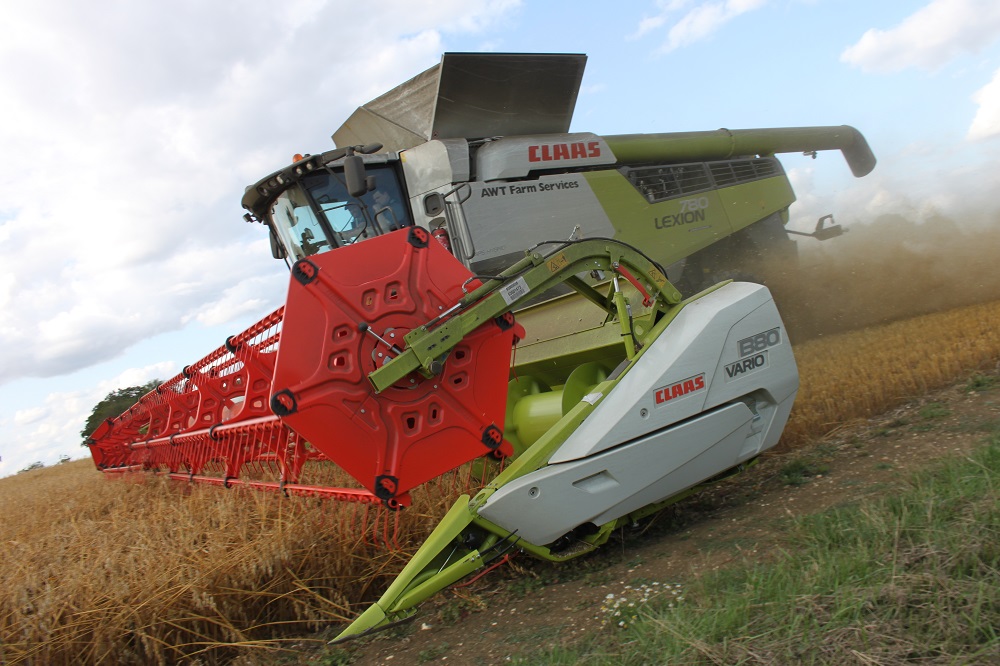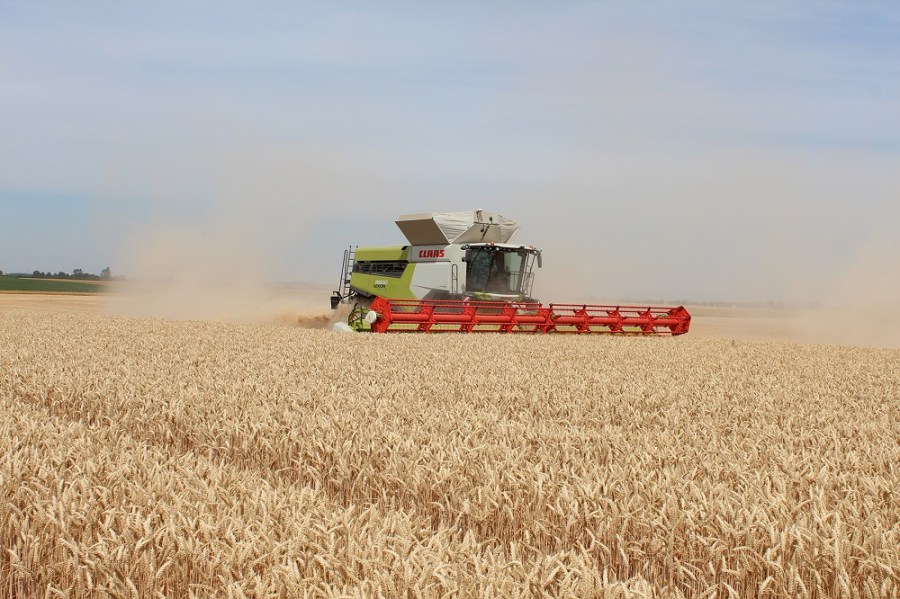As the UK market leader, CLAAS combines and the LEXION is particular, have been a noticeable presence across the countryside at harvest time since its launch 20 years ago.
However, with the announcement of a new-generation Lexion Hybrid, could growers be persuaded to trade in their old models for something that promises improved power, performance and productivity?
CPM spoke to Suffolk farmer, Robert Baker, about the key differences on Claas’ latest offering and how growers could benefit from the new-look range.
By Charlotte Cunningham
With seven faultless harvests under its belt JD and RJ Baker Farms’ 760TT had proved itself to be a reliable performer. “We’ve always run Claas combines since my grandfather’s day,” explains Robert. “We tend to keep our combines for four of five years, but our 760 was such a good one that we felt we could stretch it further.
“Even at seven years old I was pretty reluctant to let it go, but we didn’t want to push our luck.

However, when the prospect of testing a new-generation, pre-production narrow bodied Lexion 7700 arose, it was too good to turn down, he adds. “We were offered the chance to try one of these top-secret new Lexion combines, so I jumped at the opportunity.
“It also coincided with a move from 24m to 32m tramlines as part of our attempt to have more of a controlled traffic approach. Being able to run a 10.8m header meant we had the prospect of realistically squeezing three runs into each tramline. With RTK steering that’s worked out just right.”
But with a proven, faultless combine in the shed for comparison, how exactly did the 7700 perform in the field? “As an estimate, I’d say we’re seeing 15-20% more output from the 7700 compared with our old 760, if not more,” says Robert.
“Previously, our limiting factor was sieve losses. We can push this new machine so much harder – it’s either rotor losses or engine loading that put a cap on what it’ll do.
Clean sample
But it’s not all about the heap of grain in the shed. According to Robert, the farm is seeing a huge improvement in the sample too. “It’s always hard to tell how good a sample is until you get the analysis back, but by eye, everything coming off the new machine seemed significantly cleaner,” he explains.
“The proof came in the oilseed rape when we were able to turn the dresser off. Usually we run everything going into store over the cleaner to get the greens out, but this year there was no need for it.”
Robert is convinced that this boils down to the new sieves on board the 7700. “The bigger frog-mouths mean there’s far more surface area and we’re able to run more wind than before without chucking the grain out over the back.”
Crop flow
With harvest progression often dictated by potentially variable weather patterns, good crop flow when you do get the combine running can be very beneficial.
Operator, Simon Farrow, says he’s noticed an improved, quicker flow within the new model. “I believe that this is due to the redesigned APS system. With bigger diameter drums, all speed-matched, it’s not affected by lumpy green crops and just keeps chomping through it.
“As a result, engine loading is more even so you don’t get that surging effect which has got to be good for everything – from losses through to belt life.”
On top of that, the cruise control systems seems to be much quicker to react to changes in the crop and so the whole machine runs more smoothly, he adds.




